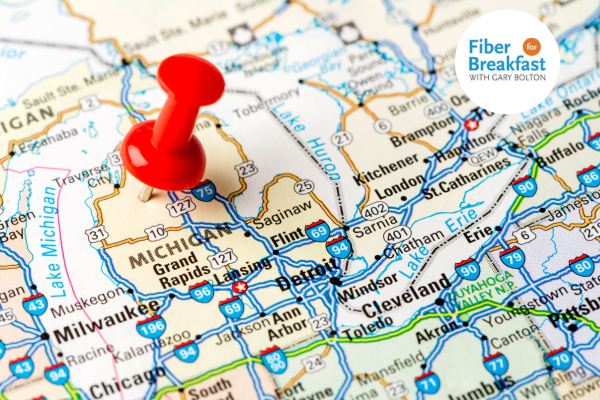The Numbers Become Clearer for Fiber and Satellite
Shenandoah Telecom Company (Shentel)’s strategy and estimated costs for fiber deployments disclosed to Wall Street analysts bring into sharp focus the future of broadband. Light Reading reports Shentel estimates it costs anywhere between $1,000 to $1,400 to pass a household for their GloFiber product with initial capabilities of up to 2 Gbps service using XGS-PON. In its existing Shentel rural markets served by DOCSIS 3.1 hybrid fiber-cable, costs are between $1,500 to $2,500 per home passed while its Beam fixed wireless offering will deliver up to 100 Mbps at a cost per passing of around $250 to $350 per market.
Over the next five years, publicly-traded Shentel expects to add hundreds of thousands of fiber and fixed wireless customers, while it may add only 4,000 or so cable customers onto its legacy network. Adding customers to a greenfield fiber territory is substantially cheaper than adding a cable customer, so the company is investing big in fiber and fixed wireless in lower density rural markets.
Roughly speaking, Shentel will take five years to add 500,000 customers with a mixture of future-proof fiber capable of going to 10 Gbps and 100 Mbps fixed wireless service which will likely be upgraded with better gear and/or enhanced with fiber deployments enabled by broadband infrastructure funding.
SpaceX Starlink says it is up to 90,000 customers around the world and plans to have up to 500,000 customers on its satellite broadband network service within a year, according to its latest update with the Federal Communications Commission (FCC) and reported by CNBC. Unfortunately, SpaceX didn’t break out how many users it is serving in the U.S. is and is still touting a customer pre-order/wait list of over a half million users globally.
How SpaceX gets from 90,000 customers today to 500,000 customers worldwide in a year is a path it hasn’t described. Based on previously reported data to the FCC and some guesswork, SpaceX is currently manufacturing Starlink dishes at a rate between 15,000 to 20,000 per month. In order to meet its goal of 500,000 dishes within a year, the company would have to ramp up by producing and shipping an average of over 34,000 dishes per month starting now in August. At the same time, SpaceX wants to further drive the cost of its dishes down from $1400 to $500 or less – preferably less, since the company currently charges $500 for the end user terminal equipment and eats the difference as the cost of acquiring a customer.
SpaceX also hasn’t provided details on how it plans to get to gigabit level speeds, another promise it has been touting to the FCC and the media. Ookla has released Speedtest data showing Starlink delivering download speeds of around 97 Mbps and upload speeds of nearly 14 Mbps with latencies of 45ms. Compared to legacy providers HughesNet and Viasat, SpaceX cleans up in terms of broadband speeds and latency but doesn’t come close to matching the “All Fixed” speeds of 115 Mbps download and 17 Mbps upload with a latency of 14ms.
While Starlink is still in beta, SpaceX CEO Elon Musk saying speeds will go up to 300 Mbps downlink speeds in the fall. But there are no promises by the company that it will be able to deliver gigabit speeds with existing equipment or how many of its GEN2 advanced satellites will have to be put into orbit to get to gigabit speeds. SpaceX will argue that Starlink provides faster speeds than the FCC 25/3 Mbps baseline minimums on the books, but that’s all moot if there aren’t enough dishes to go around to those that want and need them.




